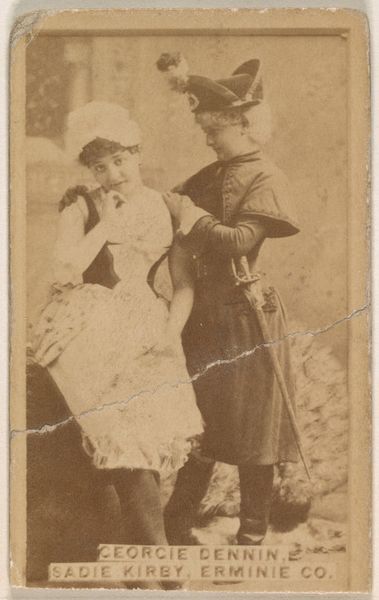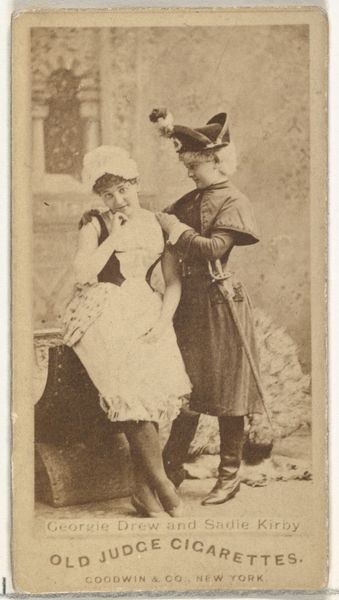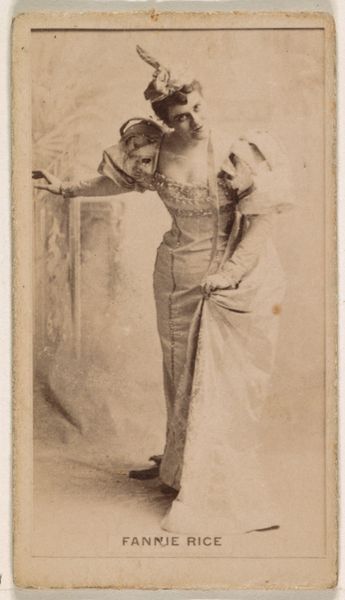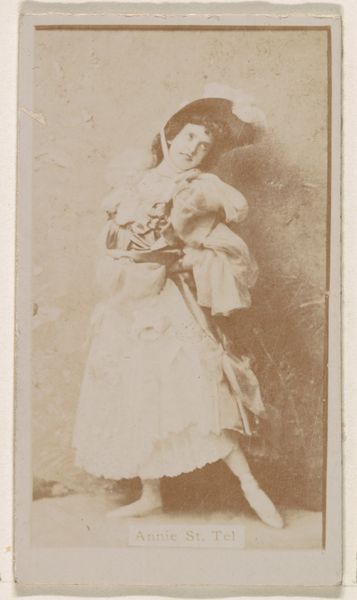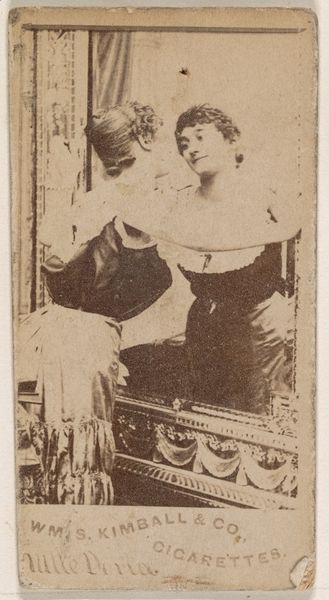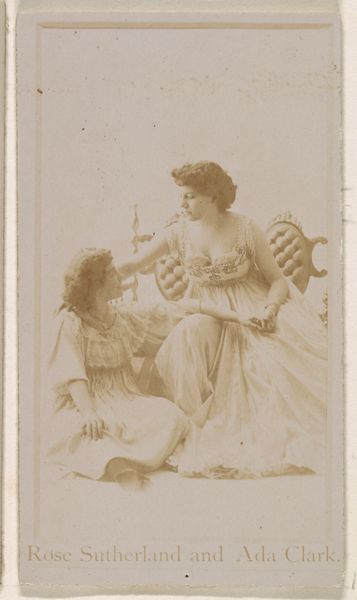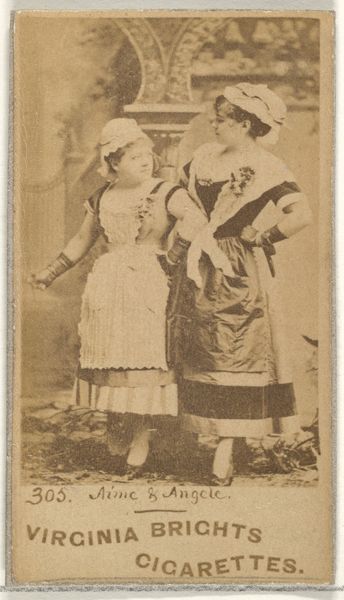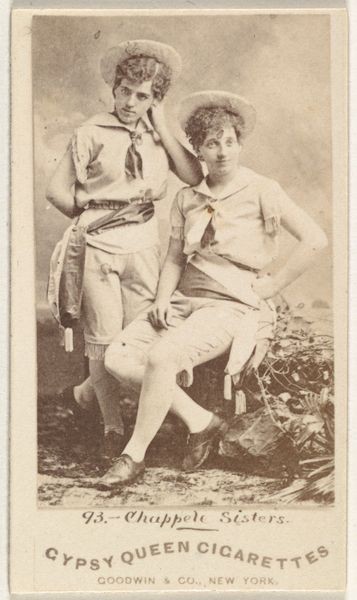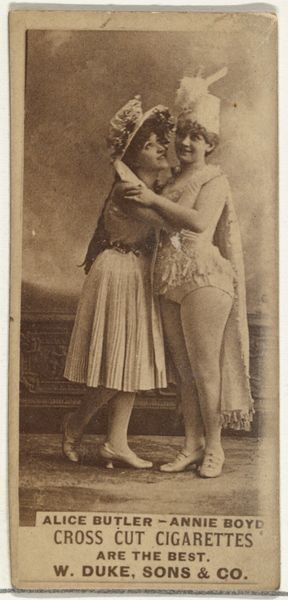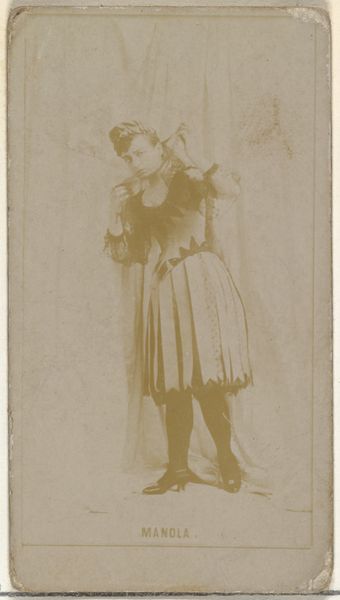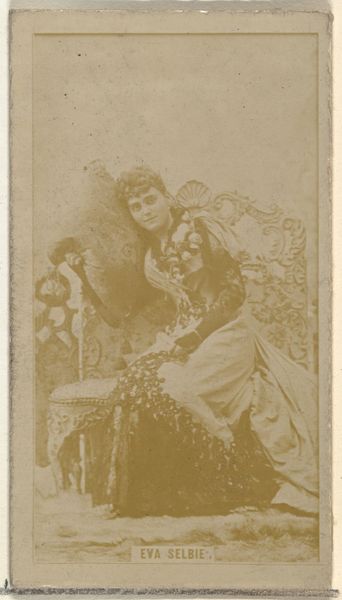
Alice Dacre and Frankie Raymond, from the Actors and Actresses series (N45, Type 8) for Virginia Brights Cigarettes 1885 - 1891
0:00
0:00
drawing, print, photography
#
portrait
#
drawing
# print
#
photography
#
genre-painting
Dimensions: Sheet: 2 5/8 x 1 1/2 in. (6.6 x 3.8 cm)
Copyright: Public Domain
Editor: So this is "Alice Dacre and Frankie Raymond" from the "Actors and Actresses" series, created by Allen & Ginter between 1885 and 1891. It's a small print, originally a cigarette card. I’m immediately struck by how staged and almost... performative it feels, even beyond just being a portrait. What stands out to you? Curator: Well, I think you've hit upon a key element: performance. Look at how their bodies are arranged, how one's arm drapes across the other's shoulder, and how one actress is almost flaunting the lower half of their leg; these cards provided more than simple representation. Considering this card was created for a cigarette brand, do you think that it could also provide insight into Victorian constructs of femininity and spectacle, gender expression, and the rise of consumer culture? How did such a commercial object, aimed at male consumers, participate in the shaping, or perhaps limiting, of women’s roles in society and in theatre? Editor: That's fascinating. I hadn't thought about how the commodification of these actresses plays into larger societal power structures. So the image, seemingly innocuous, becomes a site of negotiation, of defining roles and expectations. I’m wondering, do you think this portrait could be seen as subversive, in some way? Is it reclaiming any agency? Curator: Subversion is a strong word, but these actresses were actively participating in creating their image. By being famous and circulating this card, were they actually gaining some autonomy within the restrictions of that era’s cultural norms, considering the object that these women’s images were tied to was, at the time, meant only for consumption for men? Think of the card as more than just advertisement; perhaps a signifier of empowerment and self-possession, to some extent? Editor: I see your point. By acknowledging the inherent constraints and the complexities, we get a more complete view of this fascinating little artifact. Thank you! Curator: And thank you. You've given me a renewed sense of how to appreciate popular art within its complicated socio-historical reality.
Comments
No comments
Be the first to comment and join the conversation on the ultimate creative platform.
